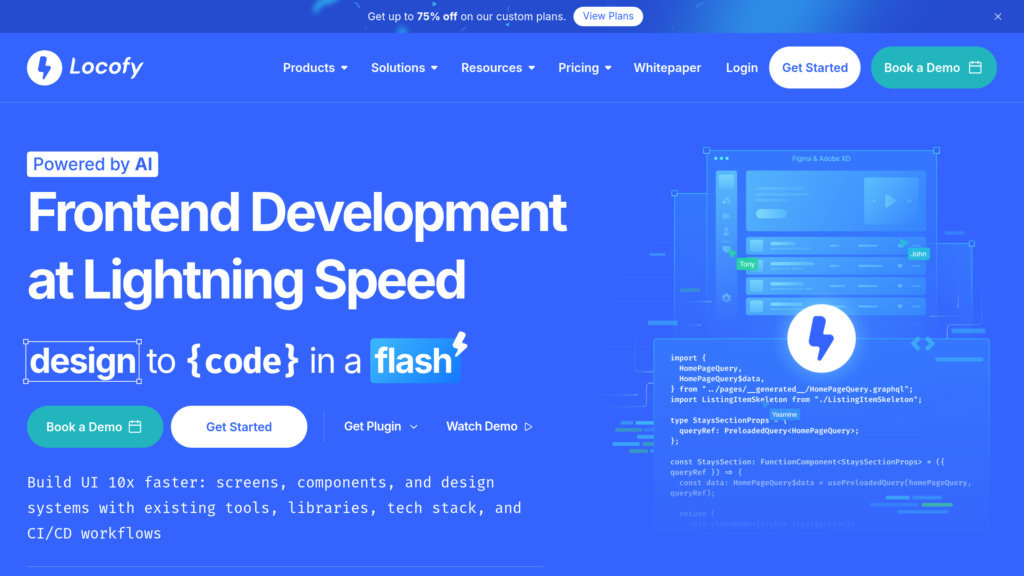Locofy.ai
Design to code converter, instantly generates responsive frontend code
Introduction
What is Locofy.ai?
Locofy.ai is a cutting-edge, AI-powered solution that converts UI/UX designs created in Figma and Adobe XD into high-quality, ready-to-deploy frontend code. It supports a wide array of frameworks including React, React Native, Next.js, and Gatsby, fostering seamless collaboration between designers and developers by automating the coding workflow. With features like automated responsive design and live prototyping, teams can quickly iterate and ensure design consistency, slashing the time and resources typically required for frontend development.
Key Features
Multiple Framework Support: Offers flexibility by generating code for popular frameworks like React, React Native, Next.js, Gatsby, and standard HTML/CSS.
Responsive Design Automation: Produces code that automatically adjusts to various screen sizes and devices, ensuring a flawless user experience.
Design to Code Conversion: Effortlessly translates design files into clean, modular code, drastically reducing manual programming efforts.
Live Prototyping: Allows teams to view and interact with responsive design prototypes in real-time before final code export.
Component Tagging and Customization: Simplifies the process of identifying and reusing UI elements by enabling easy component tagging and modification.
Integration with Developer Workflows: Connects seamlessly with GitHub and fits into CI/CD pipelines, smoothing the transition from design to active development.
Use Cases
Prototyping and User Testing: Generate interactive and responsive prototypes directly from designs for quick feedback and validation.
Rapid Frontend Development: Accelerate the conversion of visual designs into functional code, potentially reducing development time by up to 70%.
Design-Developer Collaboration: Serves as a bridge between design and engineering teams, ensuring the final product accurately reflects the original design vision.
Multi-Platform Application Building: Create consistent user interfaces for both web and mobile applications from a single design source.
Scaling Product Development: Efficiently produce modular and maintainable frontend codebases to support the growth of complex projects.
